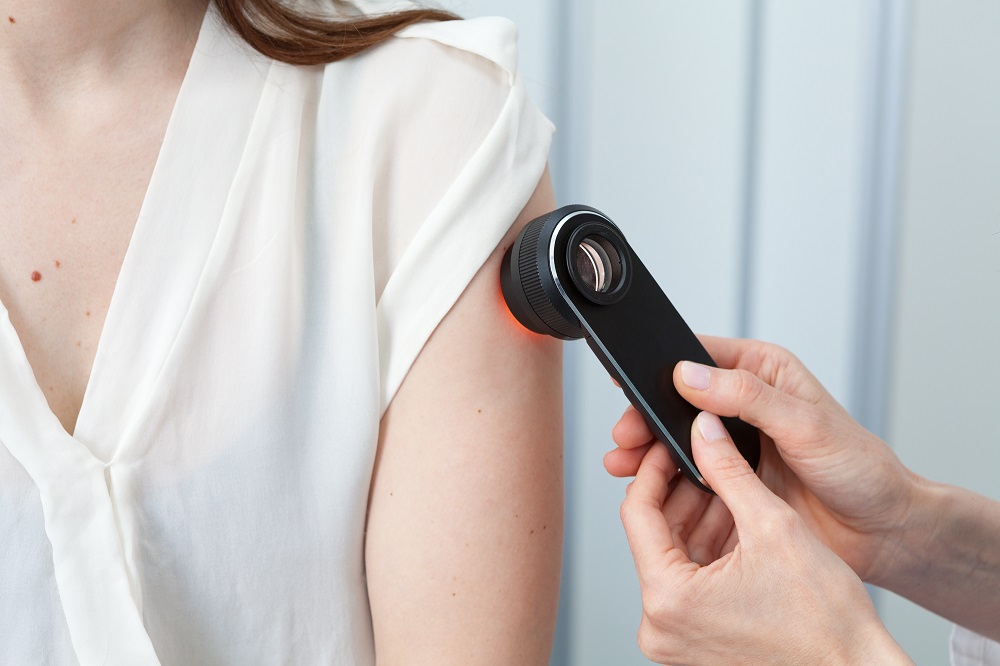Find here the most commonly asked questions about skin cancer checks!
1. Who should have a skin cancer check?
Anyone who is higher risk for skin cancer:
- people with fair skin, freckles, red or blond hair
- people with frequent sun exposure – outdoor jobs or sports/hobbies
- those with a family history of skin cancer
- patients who have had a past skin cancer
- patients on immune modulating medications / transplant patients
- those with multiple moles/freckles
- anyone who is worried about skin cancer or who has a changing or new mole/spot
2. At what age should you first have a skin check?
There is no particular age that is recommended to start skin cancer checks. We recommend that if teenagers are interested, they come in for a once off check and education about skin cancer and it’s prevention. Very rarely a skin cancer can occur in children, so if a spot is very odd or rapidly changing even children should come in for a check.
3. What is involved in a full body skin check?
During your skin cancer check, your doctor will ask a few questions about your general health, skin and occupation/risks. You will then be asked to privately disrobe to underwear and lie on a bed covered in a sheet or blanket. Your doctor will then systematically look at your skin part by part, inspecting any worrisome lesions with a dermatoscope (a special skin microscope). Sometimes photos of particular lesions will be taken and uploaded into your medical file. Your doctor will then discuss what has been found and the possible treatment or surveillance options.
4. What is the difference between serial photography and mole mapping?
At GVSL we use serial photography to watch any lesions that are not serious enough to cut out immediately, but can’t be completely cleared of concern in one viewing. We are looking for change over time – often 1 – 3 months. This is different to mole mapping where a non-doctor practitioner takes photographs of every skin lesion on your body and sends them offsite to a dermatologist to view.
5. What changes should I watch for in a skin spot?
“Change” itself is a serious symptom to watch for, particularly something growing/thickening and changing over several weeks or months. It is also good to keep the “ABCDE’s” of skin cancer detection in mind.
A= asymmetry
B = border (irregular or non distinct)
C = colour – more than one colour, changing colour, different colour to other lesions
D = diameter (enlarging diameter, or diameter > 6mm)
E = evolution (or as above “CHANGE”!)
6. Can skin cancer affect areas of skin that are not exposed to the sun?
Yes it can! It is much more likely to affect sun damaged areas – the most common places are face and back of hands. But anywhere you have skin it is possible to get skin cancer. So if you have a weird changing spot on your bottom or privates, please advise your doctor.
7. What is the best prevention for skin cancer?
Slip (on a tshirt), slop (on sunscreen), slap (on a hat), slide (on sunglasses) and seek (shade). Avoid all solariums. Have a regular yearly skin cancer check to detect lesions at an early treatable stage.
8. Is chopping the lesion out (excision) the only way to treat skin cancer?
Excision is a common way to treat skin cancer. Sometimes there are other options depending on the type of cancer or pre-cancerous lesion and the location. These may include freezing with liquid nitrogen, PDT (photo dynamic therapy), immune modulating creams such as Aldara, or radiotherapy. The doctors at GVSL will advise you of your options, and can refer on to dermatologists and plastic surgeons if you require more specialised advice or care.
9. What is the difference between sunscreen and sunblock?
Sunscreen uses a chemical reaction to protect the skin from UV rays. Sunblock contains an ingredient (often Zinc Oxide) that blocks the suns UV rays. Some people who are sensitive or reactive to sunscreens prefer sunblocks. Either way the most important thing is to apply properly and reapply after swimming or at the advised regular time interval.
10. What is the SunSmart app?
This is a great free app that you can download from the app store or via the SunSmart app website. It will give you information about the UV rating each day – calculated from local weather reports, and apply this to your skin type/age to advise you when you need to use sun protection for the day.
